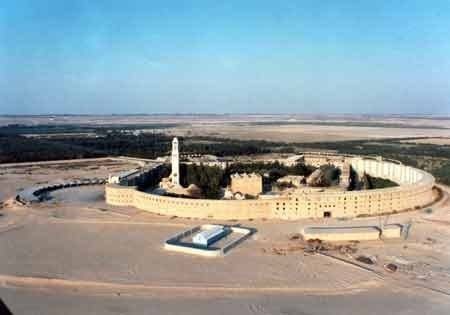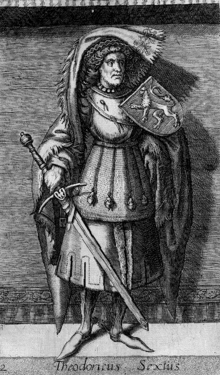During the early phases of Nur al-Din's and Saladin's rise to power, the Military Orders were apparently not viewed as a special threat. In the latter half of the twelfth century Arab sources recognize the military orders as distinct groups among the Franks.
Changing Templar significance in Muslim eyes in the 12th century Holy Land
Spiritual devotion, the greatest threat of the Knights Templar
Christian monastic presence and influence in the pre-crusade Muslim world
Since the earliest days of Islam, christian monasticism was a protected institution of a protected religious minority. This protected status of Christianity and monasticism in early Islamic society is emphasized by the important roles some Christians played under islamic rule.
The Equestrian Order of the Holy Sepulchre of Jerusalem, Templar predecessor?
The Equestrian Order of the Holy Sepulchre of Jerusalem (Latin: Ordo Equestris Sancti Sepulcri Hierosolymitani, OESSH), also known as the Order of the Holy Sepulchre, is a Roman Catholic papal order of knighthood, which was founded as the Order of Canons of the Holy Sepulchre.
It traces its roots to Duke Godfrey of Bouillon, "Advocate of the Holy Sepulchre", leader of the First Crusade and first ruler of the Kingdom of Jerusalem. It was recognized in 1113 by a Papal Bull by Pope Paschal II.
The Knights Templar in Arab sources of the 12th century
Lessons in Crusader cuisine
 The natural harbor at Apollonia Fortress in Israel never developed into a port as large as Acre, where dozens of ships would anchor in the 13th century, to be loaded with locally- produced sugar bound for Europe. But the ruins of Apollonia are enough to make one see that the constant movement of people, raw materials and cooking techniques was already occurring hundreds of years before the word “globalization” became part of the modern vocabulary.
The natural harbor at Apollonia Fortress in Israel never developed into a port as large as Acre, where dozens of ships would anchor in the 13th century, to be loaded with locally- produced sugar bound for Europe. But the ruins of Apollonia are enough to make one see that the constant movement of people, raw materials and cooking techniques was already occurring hundreds of years before the word “globalization” became part of the modern vocabulary. Muslim protection of Christian monasticism before the Crusades
Although pre-Islamic arabia is often viewed, with some justification, as somewhat of a cultural backwater, the Arabs nonetheless had extensive contacts with both the Sassanid Persian and Byzantine empires.
Counts of (West Frisian) Holland, the cursades and the Templars
Saint Francis of Assisi, early missionary to the Muslim world
Saint Francis of Assisi, founder of the Franciscan Order, was born at Assisi in Umbria, in 1181 or 1182. He died there on 3 October, 1226. Many of the stories that surround the life of St. Francis say that he had a great love for animals and the environment. Therefore October 4, Saint Francis' feast day, is celebrated as World Animal Day.
Less known is that Francis visited Egypt and attempted rapprochement with the Muslim world, be it in the way of a missionary.

.jpg/866px-Saladin_Soldan_d'Egypte_(BM_1879%2C1213.302).jpg)




.jpg/800px-Giotto_-_Legend_of_St_Francis_-_-11-_-_St_Francis_before_the_Sultan_(Trial_by_Fire).jpg)